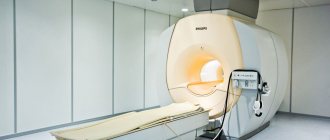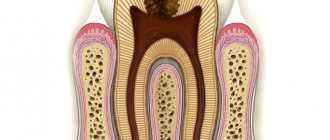Article for the “bio/mol/text” competition: What is constant in an ever-changing world? When answering this question, they usually remember love and death, sometimes birth. But we must remember that pain is still eternal. Having come into human life, it can destroy it to the ground, turn it into a nightmare. The fear of pain can sometimes be stronger than even the fear of death itself. But pain is not a Lovecraftian horror, it lies within the limits of our understanding, and in the last few centuries humanity has been learning to fight this worst enemy of a comfortable life. And to defeat the enemy, you need to know him.
What kind of pain is there?
It's no secret that the nervous system is responsible for the sensation of pain. In general terms, the work of this system can be represented as follows: receptors capture an external signal and convert it into a nerve impulse ( transduction ), transmit information along the nerve ( conduction ), and then it is processed in the spinal cord and “sent” to the brain ( projection ) for generation of painful sensations ( perception ) (Fig. 1). Almost everyone remembers that pain is a reaction to an external stimulus, but in fact this is not always the case: it can also occur when the nervous system itself breaks down.
Figure 1. Scheme of the pain impulse. The simplest signal transmission pathway involves three groups of neurons, whose fibers are indicated in different colors in the diagram. The nociceptor (indicated in purple in the diagram) is responsible for the transduction of pain; transduction occurs along nerve fibers, indicated in red; in the spinal cord, pain is projected onto the “green” section of the diagram; the perception of pain begins when third-order neurons transmit a nerve impulse from the thalamus to the cerebral cortex.
[15]
It is worth noting that pain evolved as a beneficial adaptation, and in fact, continues to play an important role in our lives. Think about what life would be like without pain - we wouldn’t be able to pull our hand away when touching a hot surface, we wouldn’t notice the wounds being inflicted, and it’s hard to imagine how difficult the life of doctors making a diagnosis would be. However, this is not all the benefit that our pain perception system brings us. Hand in hand with the sensation of pain go the sensations of pressure, cold and heat (that is, touch) - and the ability of the body to change its parameters in response to a stimulus from the external environment. There are a number of diseases (mostly genetically determined) in which the perception of pain is impaired. Their severity varies depending on which receptor or channel is “broken.” The most severe forms (for example, hereditary sensory autonomic neuropathy type IV) are characterized by a complete loss of pain sensitivity in the extremities and a violation of the body's ability to regulate body temperature. But first things first.
The classification of pain proposed by Clifford Woolf [1] includes four types: nociceptive, inflammatory, neuropathic and functional. In addition, it is worth noting psychogenic pain.
- Nociceptive pain is the most common: it is the very reaction to external stimuli. With this type of bodily pain, all the necessary components of the nervous system work properly. Our further narrative will be devoted to the molecular mechanisms of nociceptive pain.
- Inflammatory pain is actually nociceptive by mechanism, but, unlike the “classical” variation, it occurs in response to stimuli that normally should not cause this pain - various inflammatory mediators.
- Neuropathic pain occurs when the functioning of peripheral nerves is impaired and manifests itself in the form of spontaneous pain without cause.
- Functional pain (or nociplastic) occurs when the processing of signals coming from the nerves is disrupted - the spinal cord takes the signal “everything is fine” as a signal for the development of pain.
Since we decided to focus on “normal” nociceptive pain, let’s take a closer look at each of the stages of its occurrence.
Which doctor should I consult for pain in the lumbar region?
Usually, you first need to contact a therapist, who will already give a referral to a specialist - a neurologist, traumatologist, rheumatologist, or osteopath.
If you are sure that you know exactly the origin of the pain, you can contact a specific doctor directly. For example, if you recently had a bad fall, then you need to see a traumatologist.
Our clinic has a manual therapy department in St. Petersburg, where you can make an appointment with the right doctor for consultation or treatment.
Episode I: A Threat Captured
To detect any signal, our body uses an impressive arsenal of receptor proteins. Their task is that they react to a strictly defined external factor and transmit a signal about this binding using conformational changes [2], which also entail a change in the biochemical properties of this receptor. The signals transmitted from the receptor are amplified by a cascade of protein interactions in the cell, can be transmitted through the nervous or endocrine systems and ultimately lead to a physiological response.
Neurons operating in the nociceptive system differ in the set of receptors. Among these neurons, four groups are distinguished: those carrying receptors for temperature, chemical action, mechanical action, and multimodal (with receptors for all stimuli).
Some of the most important receptors that respond to heat are proteins of the TRP . These are ion channels that are non-cation specific - when opened, they allow sodium, magnesium and calcium into the cell, resulting in an action potential in the cell necessary for the transmission of a nerve impulse. There are several of these valiant warriors of thermosensitivity: TRPV1–TRPV4 and TRPM8. The former are activated at elevated temperatures, while the latter reacts to cold. These channels have an interesting feature - in addition to temperature, they can be activated by chemical stimuli.
The biochemical mechanisms of this activation differ from temperature activation, but in the brain, in response to these chemical stimuli, almost the same sensations arise as to a change in temperature. Now remember which foods cause a burning sensation and which ones cause a cold sensation? I think almost every reader has come across these products. The spiciness of chili peppers is due to the fact that the capsaicin it contains activates the TRPV1 receptor (such substances are called agonists ) [3]. And menthol, contained in mint, is a TRPM8 agonist and causes a feeling of coolness (Fig. 2) [4].
Figure 2. Binding of capsaicin and menthol by TRP receptors leads to activation of “temperature” nociception. Interestingly, under certain conditions, capsaicin can not only cause pain, but also reduce it - it desensitizes (that is, makes it less sensitive to stimuli) other channels of the TRP family, in addition, it provokes the release of endorphins, and together with other drugs it can... promising painkillers.
But if you can use small molecules to make us feel the effect of nociception, then maybe you can use other molecules to block this receptor? Yes! The development of antagonists [3], which, by blocking the receptor, can reduce pain, for example, from capsaicin, has been underway since the 1990s, but most drugs have not yet reached the market (Fig. 3). Interestingly, these drugs are proposed to be used to treat neuropathic pain, that is, pain when the receptors are activated without an external cause. Whether pharmaceutical companies will achieve success remains to be seen.
Figure 3. One of the first TPRV1 antagonists developed was capsazepine. This drug is currently in clinical trials. In general, the success of this kind of drugs may become a new milestone in the history of the pharmacology of analgesics - blocking nociceptors instead of weakening the pain impulse in later stages.
Mechanonociceptors are a much more heterogeneous and diverse group of receptors than thermoreceptors. Among them, it is worth highlighting the receptors activated, in addition to pressure, by the signal oligopeptide bradykinin. Its B-1 receptor is synthesized in damaged cells, for example, when injured. By binding to bradykinin, it activates a signaling cascade that leads to pain. Interestingly, the direct effects of receptor binding include increasing inflammation—that is, maintaining a stimulus for further activation of pain receptors: the more pain, the more pain. Therefore, frequent activation of B-1 (for example, by constant inflammation in autoimmune diseases) can cause the development of chronic pain [5].
Receptors that perceive various chemical irritants ( irritants ) are also a diverse and sometimes poorly studied group. Among them, a member of the already familiar TRP family, TRPA1, is especially noteworthy. This receptor is activated by completely different molecules, often reacting with them, which leads to irreversibility of the effect. Commonly known TRPA1-activating irrinants include allyl isocyanate, found in the famous Japanese seasoning wasabi, and allicin, found in garlic (Figure 4).
Figure 4. The taste of wasabi is very different from garlic, but one receptor is responsible for the perception of the spiciness of these seasonings - TRPA1. The sulfur-containing volatile substances of these plants are capable of activating the receptor and further nociceptive transmission. These agents are useful to scientists in studying the chemical basis of how receptors work.
As already mentioned, TRP receptors are ion channels. Having opened, they allow the most important cations - Na+ and Ca2+ - into the cell. The entry of positively charged ions changes the electrical potential of the membrane [6] and also activates the work of a number of signaling proteins. All this leads to the appearance of a nerve impulse, which begins to spread along the neuron in a certain direction.
Separately, it is worth mentioning the pain that occurs during inflammation. The key substance to which nociceptors respond is histamine, which some cells of our immune system (such as mast cells) release into the blood in response to inflammatory stimuli. Histamine binds to its receptors (from the GPCR family). Activation of histamine receptor type 1 ( H1 ) leads to the activation of phospholipase C (PLC) and the hydrolysis of phosphatidylinositol bisphosphate (PIP2) to form inositol triphosphate (IP3), which then triggers the release of Ca2+ from the endoplasmic reticulum. Calcium, having bound with calmodulin, activates protein kinase C, which, through further phosphorylation of regulatory kinases, suppresses the expression of voltage-dependent potassium channels type 7 (Kv1.7), which leads to membrane depolarization and pain impulse transmission [7]. Interestingly, type 3 histamine receptors, which are localized in the central nervous system, can inhibit the conduction of certain nociceptive impulses [8].
It is worth noting that other active players in the inflammatory process - prostaglandins - act similarly: as a result of the binding of prostaglandin E2 to the PTGER2 , protein kinase A is activated, which, in turn, increases the expression of the already familiar TRPV1 [9].
How is diagnosis and examination done by a doctor?
First of all, the doctor must exclude conditions that are life-threatening. For this purpose, clinical and biochemical blood tests are performed. They make it possible to detect inflammatory processes and excess calcium, which is typical for cancer that has metastasized to the bones. Tests also detect multiple myeloma and many other pathologies.
A man over 50 years old may have a prostate-specific antigen test to rule out prostate cancer.
X-rays are required to determine the height of the intervertebral discs and identify osteophytes, if any. The latter are bone tissue growths that appear due to improperly distributed load on the vertebrae and changes in their shape.
MRI and CT are needed to determine whether there is a bulging intervertebral disc, calcifications, or spinal stenosis. Similar changes can be seen on ultrasound, which is increasingly being prescribed instead of CT, as it does not provide radiation exposure.
The patient must consult a neurologist and, if necessary, a chiropractor.
When the examination is completed, the doctor can accurately diagnose and determine treatment tactics. The success of therapy increases tenfold with early treatment.
Our clinic address: St. Petersburg, st. Bolshaya Raznochinnaya, 27 metro station Chkalovskaya
Episode II: Nerve Fiber Attack | Conduction
Using examples, we figured out how nociceptive receptors work, but they are located “at the leading edge,” close to the stimulus, and the order for pain sensations is given from the brain. This means that it is necessary to convey the signal to the highest authorities. To do this, the newly received receptor action potential activates a variety of voltage-gated ion channels. Sodium and potassium channels are required to generate action potentials that transmit nociceptor signals to synapses in the dorsal horn of the spinal cord. They are another potential therapeutic target for new groups of analgesics. Calcium channels play a key role in the release of neurotransmitters from central or peripheral nociceptor synapses, causing pain or inflammation, respectively.
is important to note at this point that the nerve fibers that carry the nociceptor signal to the spinal cord are of three types - Aδ (a-delta), Aβ (a-beta) and C. These fibers differ from each other in thickness, the presence or absence of an “insulating” myelin sheath and, as a consequence, in the speed of nerve impulse transmission and the type of impulse that is carried through them.
Aδ fibers conduct impulses quickly (10–30 m/s) and “specialize” in signals of severe mechanical pain and temperature changes.
Aβ fibers are even faster (30–100 m/s) and are heavily myelinated. The mechanoreceptors located in these fibers are extremely sensitive, so the function of these fibers is to conduct signals about weak stimuli. Excessive activation of Aβ fibers causes allodynia —pain that occurs from causes that do not normally cause pain, such as sitting in a chair.
Type C fibers conduct nerve impulses slowly (0.5–2 m/s); These are mainly signals from highly sensitive mechanoreceptors and chemoreceptors.
C and Aδ fibers work synergistically to produce most of the pain sensations.
Dental
A toothache can occur unexpectedly and take a person by surprise. The easiest way to get rid of it is to take a painkiller. But you should remember that taking the pill is a temporary measure. Therefore, you should not postpone your visit to the dentist. The doctor will examine the tooth. Then he will prescribe a photo and carry out the necessary treatment. There is no point in quenching dental pain with painkillers. If you experience any discomfort, you should immediately contact your dentist.
A tooth can begin to hurt for various reasons. For example, pulpitis can become a source of pain. It is important not to neglect the tooth, but to treat it in time, since if medical assistance is not provided in time, its condition will worsen and there is a possibility of tooth loss.
Episode III: Revenge of the Endorphins
The pain signal has reached the neurons of the dorsal horns of the spinal cord, and very soon it will be hot... But wait, maybe something can be done? Maybe the signal brings excessive suffering to the body, exceeding the benefits? Or maybe, on the contrary, the signal is not enough to realize the whole disaster? modulation occurs in the spinal cord . This is a field for a neurochemical battle between two forces - inhibitory and reinforcing.
To reduce pain, we have an internal anesthesia system. Neurons of the antinociceptive pathways secrete short oligopeptides - endorphins, which bind to receptors on the neurons of the dorsal horns, the activation of which causes attenuation of the action potential and a slowdown in the conduction of the nerve impulse. It is worth noting that it is with these inhibitory receptors that the notorious opioid drugs (morphine, heroin, methadone, etc.) bind [10], therefore the receptors are called opioid , and the endorphins that normally bind to them are translated as “internal morphines” . As you might guess, opioid receptors are the most effective and widespread target for drug action at the moment. But the terrifying dark side of this method of pain suppression is also widely known: opioid addiction.
By their nature, opioid receptors are also GPCRs, but they are inhibitory. When activated, they suppress the work of adenylate cyclase, reduce the level of intracellular cAMP and, through kinase intermediaries, activate the work of potassium channels, which leads to repolarization of the cell membrane. Ultimately, these measures slow down the conduction of nerve impulses.
In addition to the described system, well-known inhibitory neurotransmitters—gamma-aminobutyric acid (GABA) [11] and glycine [12]—take part in pain relief; and indirectly - many other signaling molecules.
In addition to the “doves” that inhibit the conduction of the impulse, there are also “hawks” in the spinal cord that enhance it. The most famous of them is glutamate [13]. In the case of a nociceptive impulse, glutamate works through the NMDA and AMPA .
Glutamate acts in a clever way: by binding to AMPA receptors, it causes activation of the already familiar protein kinase C in the neuron, which, in turn, leads to an increase in the level of intracellular calcium and membrane polarization. In addition to the fact that this accelerates the conduction of the pain impulse, it affects NMDA receptors. Normally, the voltage-gated channel is closed by a magnesium “plug” and does not open even when glutamate is bound. When the membrane depolarizes, the magnesium plug flies out, and the NMDA receptor releases sodium and calcium cations into the cell and potassium out, which promotes further depolarization of the membrane. The most well-known NDMA receptor antagonist is ketamine. It has found widespread use as a surgical anesthetic, but in recent years, due to numerous undesirable effects (including narcotic ones), it is used less and less. In veterinary medicine, on the contrary, ketamine is one of the most widely used anesthetics.
One very interesting pain modulator is substance P. It is an oligopeptide neurotransmitter that binds to metabotropic neurokinin receptors (NKR). NK1R , being a GPCR already familiar to us, causes a cascade of phosphorylation reactions through protein kinase C. As a result, the expression of the Nav1.8 sodium channel genes in the cell increases, and in the nociceptor neuron the synthesis of our old friends - NMDA and TRPV1 - increases. In addition, substance P reduces the activity of the low-threshold potassium channel (Kv1.4) in capsaicin-sensitive neurons of the dorsal ganglion and, thus, sensitizes nociceptors. Interestingly, the famous long-lived rodents - naked mole rats [14] - have virtually no substance P in the central nervous system, due to which they become insensitive to many types of pain [15].
The form in which the signal reaches the brain is determined by the balance between the opposing sides and the strength of the original signal.
Pathologies of the musculoskeletal system
One of the clinical manifestations of diseases of the musculoskeletal system is pain in the pelvic area.
.
| Disease | Clinical manifestations | Diagnostics | Treatment |
| Osteochondrosis of the sacrolumbar region |
|
|
|
| Herniated discs |
|
|
|
| Neoplasms of the pelvic bones, metastases to the spinal column |
|
|
|
| Arthrosis of the sacroiliac joint |
|
|
|
| Tuberculosis ODA |
|
|
|
Part IV: New Projection
In the gray matter of the spinal cord, there are 10 layers (Rexed plates), each of which differs from the others in the functionality of the neurons included in its composition, and, as a result, in the functions performed. In order for a nerve impulse to reach the cerebral cortex, it must first travel along the ascending pathways of these plates.
Aδ and C fibers synapse with secondary afferent neurons in the dorsal horn of the spinal cord. Aδ and C fibers transmit information to nociceptive-specific neurons in laminae I and II. In addition, the impulse is projected onto neurons of other plates. This is necessary in order to subsequently use the secondary systems of the brain’s response to pain (thanks to this, the pain is remembered).
After the impulse undergoes modulation in the dorsal horn, it is transmitted to the neurons of the ascending tracts of the spinal cord, each of which has a specific function in pain recognition.
The most important among them are the spinothalamic tract , involved in the recognition of pain, the spinoparabrachial tract , involved in the autonomic and motivational regulation of the response to pain, and the spinomesencephalic tract , involved in the activation of descending analgesic pathways, the action of which we talked about earlier.
Sexually transmitted infections
Characteristic signs of sexually transmitted infections (STIs): pain during urination, vaginal discharge, vaginal bleeding between periods. The most common types of STIs are gonorrhea and chlamydia. The final diagnosis can be made by a doctor after laboratory tests. If you are diagnosed with a sexually transmitted disease, your partner should also be tested.
Part V: The Brain Strikes Back
Processing information about pain in the brain is the most diverse and individual part of the nociceptor system.
First, the thalamus and parabrachial nucleus receive information from projection neurons in various laminae, and then transmit this sensory information to the cortical and amygdala areas, where the information is decoded as a “painful stimulus.”
It is worth noting that pain has two different components, the perception of which is responsible for different areas of the brain. Sensory-discriminative aspects include the severity of pain and its location, while the affective-emotional component of pain includes the unpleasant nature of the perception.
In order for the brain to correctly localize the source of pain, the nerve impulse is then processed by the somatosensory cortex.
The affective-motivational aspect of pain is mediated by the medial pain pathway, which includes the intralaminar nuclei of the thalamus, which project to the somatosensory structures of the cortex and limbic system. Plate V transmits nociceptive messages to the parabrachial internal lateral nucleus. The nerve fibers of this nucleus are connected to cortical areas responsible for cognitive functions (for example, behavioral response to pain) and aggressive behavior [16].
In addition to “pain awareness,” the response is often a “fight or flight” response associated with the activation of norepinephrine neurons in the locus coeruleus. In addition, after the pain signal is “processed” by the somatosensory cortex, information about the pain signal is transmitted to the hippocampus - to then be sent to long-term memory.
At the moment, we cannot say with certainty which molecular processes occurring in the brain are responsible for the “subjective perception” of pain, so no one dares to intervene with drugs at this level of pain perception - it is too dangerous.
Pelvic organ prolapse
With age or during pregnancy and childbirth, the pelvic floor muscles may weaken, causing the uterus, vagina and bladder to move downwards. This is not a dangerous condition, but it leads to a feeling of discomfort and makes sexual intercourse painful. Special Kegel exercises help strengthen the pelvic floor muscles.
Varicose veins of the pelvic veins
Varicose veins can occur not only on the legs. Dilatation of the pelvic veins leads to pain, which intensifies when the woman sits or stands. When lying down, symptoms decrease or disappear. Varicose veins of the pelvic veins are treated surgically.
Part VI: Return to the sore point
With the help of some and contrary to other neurobiochemical mechanisms, the pain impulse reached the brain. For some time, the body will experience sensations ranging from unpleasant to terrifying. Now it seems that humanity has mastered a huge number of pharmacological methods to stop pain - but this is only an illusion, and as soon as anti-inflammatory drugs - cyclooxygenase inhibitors - stop relieving pain, doctors have to use the “heavy artillery” of opioid analgesics.
As we have already found out, many receptors have now been identified that are involved in the process of transmitting pain, but even more factors still elude the all-seeing gaze of scientists. Another sad fact is that many of the pain receptors we know have other physiological functions that, if blocked, would have significant side effects. The development of TRP antagonists, as well as “next-generation opioids” that are not addictive, could be a real breakthrough - but may also bring new adversity. Today, one thing is clear to us - in the struggle to improve the quality of life, pain must sooner or later be brought under control, and in order to ride this terrible beast, we need to recognize it.
Causes
The best treatment for a disease is to prevent the disease from occurring (primary prevention) or to prevent the disease from occurring again (secondary prevention).
The basis for the prevention of pain or the disease that causes this symptom is an annual medical examination by a general practitioner, dentist, and also for women - an examination by a gynecologist, for men - an andrologist (urologist) with mandatory standard tests, which are prescribed by each specialist in his or her profile.
- Toothache – maintaining personal hygiene (brushing teeth twice a day, using dental floss), examining the dentist once a year.
- Headache - maintaining a sleep and rest schedule, avoiding stress, walking in the fresh air, monitoring blood pressure, examining a therapist and neurologist.
- Sore throat - exclude hypothermia, increase immunity (take vitamin complexes 2 times a year), in case of chronic diseases do not self-medicate, but consult an ENT doctor.
- Abdominal pain - most often the cause is diseases of the gastrointestinal tract, therefore - a correct diet, exclusion of harmful drinks and foods (spicy, fried, salty, fatty), avoid alcohol and stress. For chronic diseases, see a gastroenterologist.
- Pain in the legs - physical activity (walking) is required, avoid smoking. If you have a sedentary job, then take a break every hour for 15 minutes with physical exercise.
- Back pain - massage and physical exercises on the spine.
The main prevention of pain is a healthy lifestyle, proper nutrition, avoidance of stress, moderate physical activity, walks in the fresh air and an annual medical examination by a specialist.
Aching pain significantly reduces the quality of life and impairs performance. If you do not take any measures, then, against the background of a constant pain syndrome, an exacerbation and development of various complications may occur. Therefore, it is necessary to consult a doctor for a preventive examination when the first symptoms appear.
Since dull pain is a symptom of a wide variety of diseases, prevention is limited to normalizing lifestyle and taking care of your own health. It is important to follow a diet. The diet should include a lot of vegetables and fruits, which will saturate the body with vitamins, and therefore more successfully resist any diseases.
In addition, you need to balance your work and rest schedule. Sufficient time should be allocated for proper sleep in a well-ventilated area.
You should try to eliminate nervous tension and avoid stressful situations. In addition, you need to take care of moderate daily physical activity, since a sedentary lifestyle is often a provoking factor for the development of many serious pathologies.
You should definitely undergo regular preventive examinations. Detection of pathologies in the early stages allows for successful treatment and the elimination of any complications.
Pathologies of the urinary system
A number of diseases of the urinary system are characterized by chronic pelvic pain
.
| Disease | Clinical manifestations | Diagnostics | Treatment |
| Nephroptosis | Moderate pain that is aching in nature at the initial stage of the disease. As it progresses, it spreads to the abdominal area and intensifies, becomes permanent, and is accompanied by the appearance of blood in the urine. |
|
|
| Chronic cystitis | A symptom of pelvic pain, which is accompanied by the urge to urinate frequently, accompanied by unpleasant sensations and blood in the urine. |
|
|
| Congenital malposition of the kidneys - dystopia |
|
|
|
| Urolithiasis disease |
|
|
|










